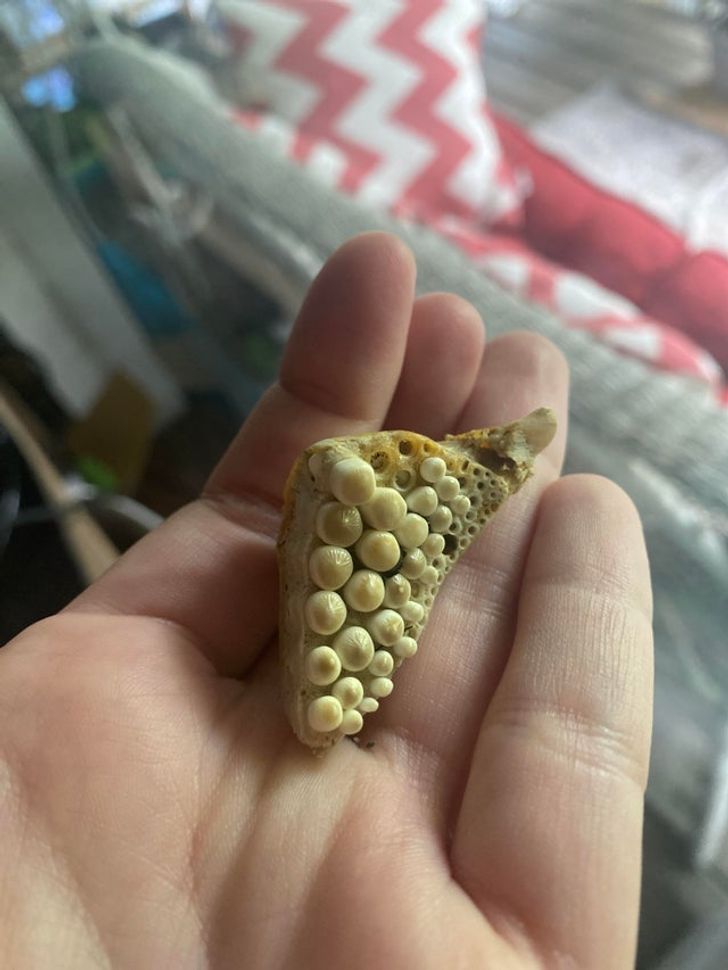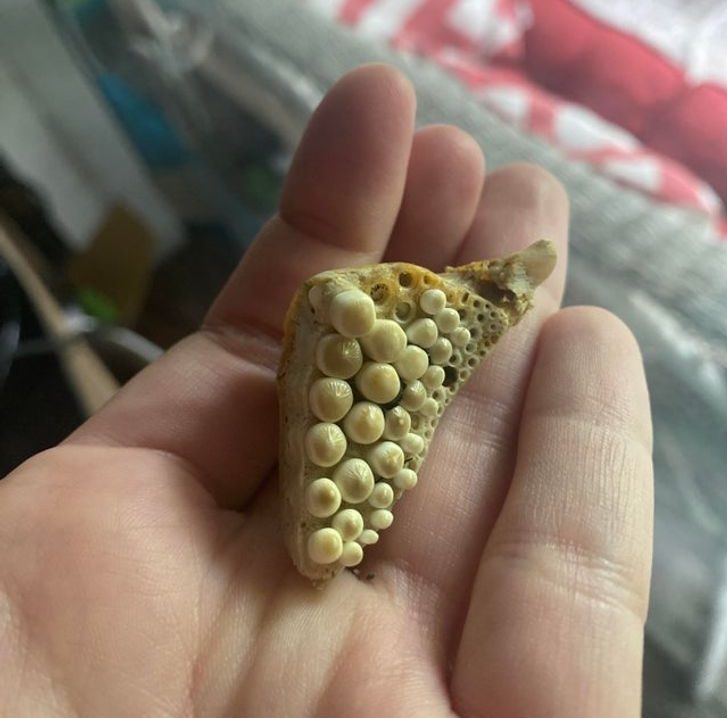Found on a beach of Lake Erie. I’ve lived near the lake my whole life and never have seen something like this.

Answer: Pharyngeal teeth. Likely from a freshwater drum
Understanding Pharyngeal Teeth
Pharyngeal teeth are specialized structures located in the throat of certain fish species. These teeth are not situated in the mouth but are part of the pharyngeal arch, assisting in grinding and processing food. In freshwater drum fish, these teeth are particularly robust, enabling them to crush hard-shelled prey like mollusks.
The Freshwater Drum: A Lake Erie Inhabitant
The freshwater drum (Aplodinotus grunniens) is a common species in Lake Erie. Known for its distinctive drumming sound, produced by muscles vibrating against the swim bladder, this fish plays a vital role in the lake’s ecosystem. Its diet primarily consists of mollusks, insects, and small fish, making its pharyngeal teeth essential for feeding.
Significance of the Discovery
Finding pharyngeal teeth on the beach is a rare occurrence. These structures are typically hidden within the fish’s body and are not commonly found detached. Their presence on the shoreline could result from natural decomposition processes or predation. Such discoveries offer insights into the local biodiversity and the life cycles of aquatic species in Lake Erie.
Lake Erie’s Rich Biodiversity
Lake Erie is home to a diverse array of aquatic life. From various fish species to invertebrates and plant life, the lake’s ecosystem is both complex and delicate. Discoveries like the pharyngeal teeth highlight the intricate relationships within this environment and the importance of each species in maintaining ecological balance.
The Role of Citizen Observations
The identification of the pharyngeal teeth was facilitated by the keen observation of a local resident. Such citizen-led discoveries underscore the value of public engagement in environmental monitoring. By reporting unusual finds, residents contribute to scientific understanding and conservation efforts.
Conservation and Education
Educating the public about local wildlife and encouraging exploration can lead to increased awareness and appreciation for natural habitats. Organizations and educational institutions can harness such discoveries to promote conservation initiatives and foster community involvement in environmental stewardship.
Conclusion
The unexpected discovery of freshwater drum pharyngeal teeth along Lake Erie’s shore serves as a reminder of the lake’s rich biodiversity and the continuous opportunities for learning it presents. Engaging with the natural world, even through simple beachcombing, can yield fascinating insights and contribute to broader ecological knowledge.


